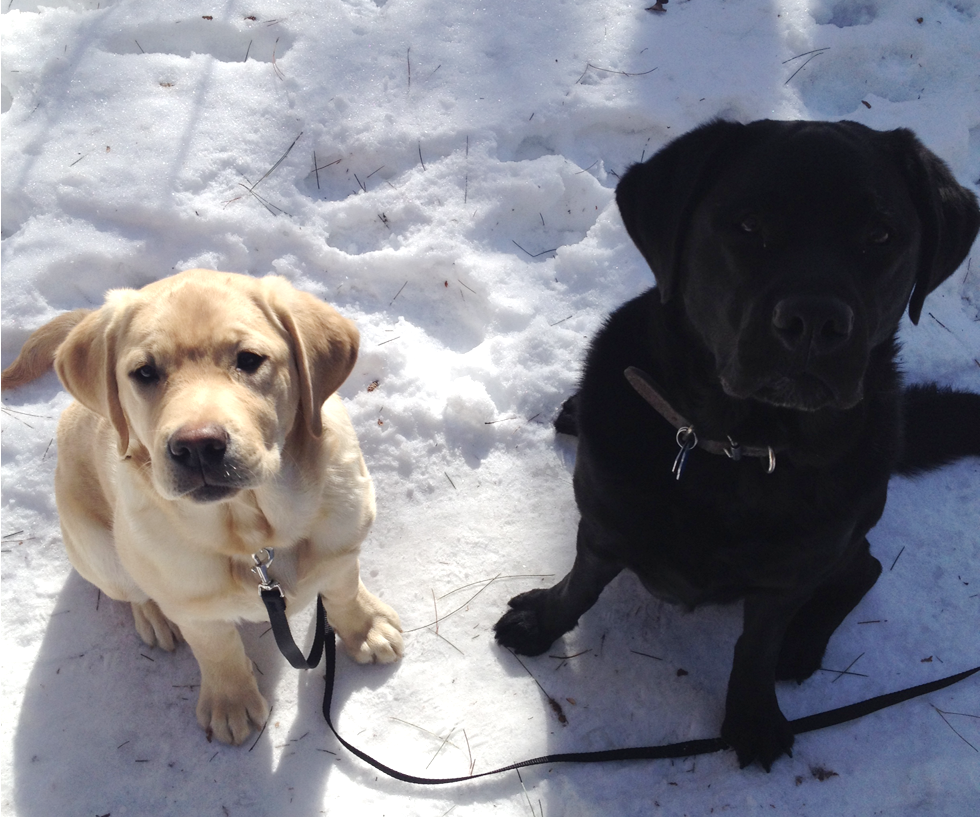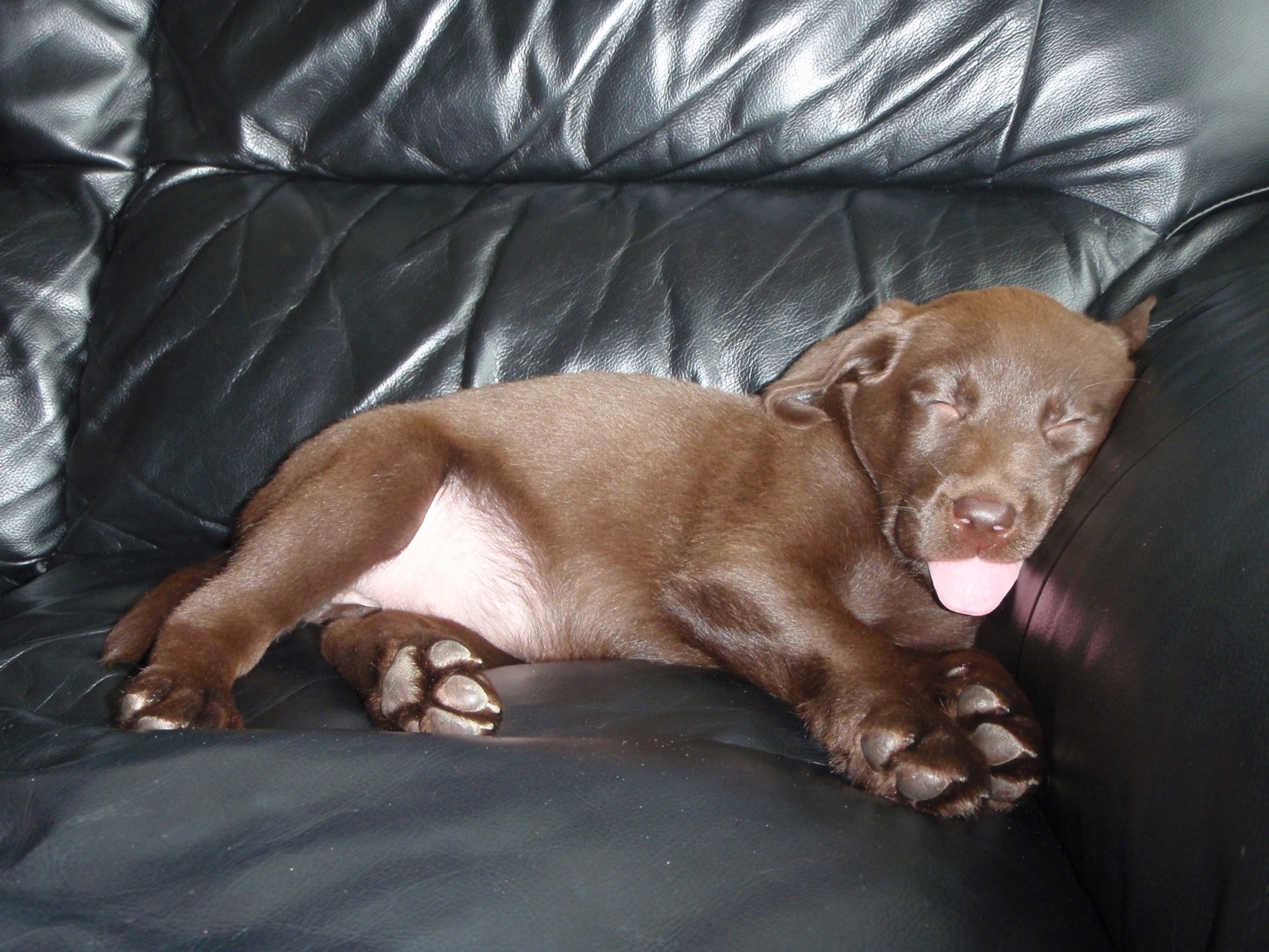Did you know that the Labrador Retriever is Canadian? The breed started in Newfoundland as a working dog that was good in the water helping with fishing nets and used for sport retrieving water fowl during hunting trips. The English and Americans took early Labs back to begin breeding programs in their respective countries, initially using the Lab for hunting, and then eventually as a show dog. This led to 2 forms of the breed – the stockier show dogs (sometimes referred to as “English” Labs) and the more agile sport dogs (or “American” Labs). Initially, only the black colouring was acceptable for the breed, but over time popularity of the yellow and chocolate varieties grew, and now all 3 colours are breed standard. Labs should be between 55 and 80lbs full grown, with a short, dense coat and broad head.
Labs are one of the most popular dog breeds around, and for good reason! They are loving, loyal companions, playful, and generally just happy dogs. They are wonderful family dogs, and if you can keep their attention long enough to get the training in, they make great hunting and working dogs as well. Their keen sense of smell makes them very good police detection dogs or search and rescue dogs and they are one of the most popular breeds used for the Guide Dog program.

Beau (yellow) and Hemi (black) show all the true lab qualities! Hemi’s parents spent an hour trying to get him out of the pond at our Open House last year!
As wonderful as Labs are, they do have some areas of concern if you are thinking about having a Lab join your family. They are infamous for their voracious appetite – for both edible and non-edible things. This has sent many a Lab to the operating room to remove objects that got stuck half way through the intestinal tract. Their appetite also makes it very easy for these guys to become overweight if they don’t get the exercise they need. As a larger breed, hip and elbow dysplasia are concerns, but good breeders should be aware of their breeding lines and do their best to minimize the risk by only breeding dogs with clean hip and elbow scores. We also see a lot of Labs with allergies which usually start out as recurrent ear infections or hot spots. All these can be managed with the help of your veterinarian, but are good things to know prior to bringing a Lab into your life (and good questions to ask your breeder about their lines and history).
True or False (answer): False – It is an old myth that dogs and cats can’t see colour. However, they don’t see as much colour as we do. Their vision is better for picking up motion or seeing better in low light (at night) which are both key features to being successful hunters. Current thinking is they see colour but it is less vivid than what we see so, your pet could probably tell you if you were wearing mis-matched socks, but they might not be able to tell you if the colour pallet of the rest of your outfit works.
Until next time, How many teeth do dogs and cats have?


